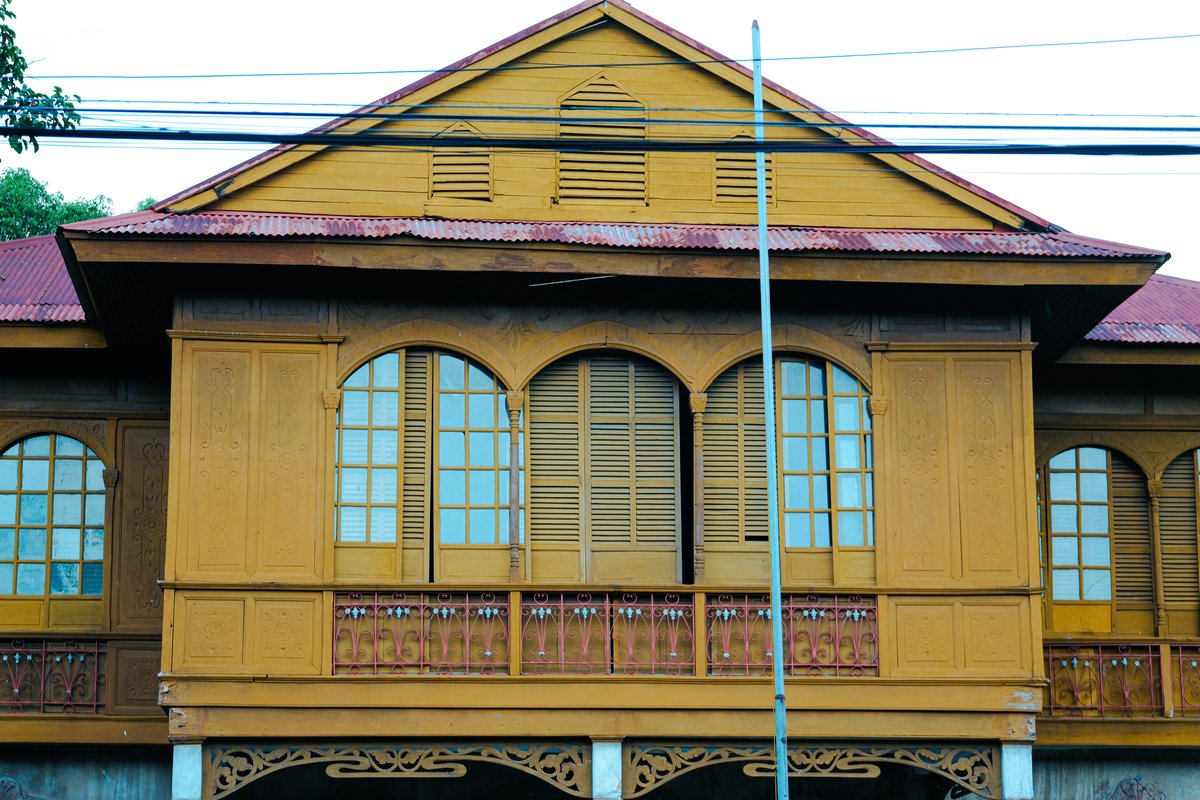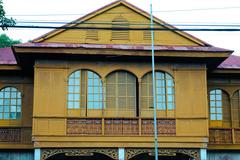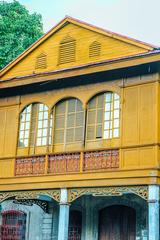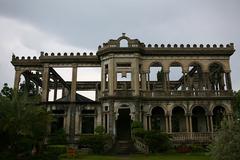
Visiting Hours, Tickets, and Historical Sites of Balay Negrense in Bacolod, Philippines
Publication Date: 17/08/2024
Overview of the Balay Negrense
Balay Negrense, also known as the Victor Fernandez Gaston Ancestral House, is a prominent historical and cultural landmark located in Silay City, Negros Occidental, Philippines. This ancestral house offers a deep dive into the opulent lifestyle of the sugar barons during the late 19th and early 20th centuries. Constructed between 1897 and 1901 by Don Victor Fernandez Gaston, a notable figure in the sugar industry, the house stands as a testament to the wealth and influence of the Gaston family (The Happy Trip). Today, Balay Negrense serves as a museum and cultural hub, providing visitors with a unique opportunity to explore the architectural grandeur and historical significance of this iconic landmark. This comprehensive guide will walk you through the visiting hours, ticket prices, and the rich cultural heritage that makes Balay Negrense a must-see destination for both history enthusiasts and travelers (Guide to the Philippines).
Navigation Guide
- Introduction
- Origins and Construction
- Architectural Significance
- The Gaston Family and Sugar Industry
- Decline and Restoration
- Museum and Cultural Hub
- Architectural and Cultural Preservation
- Visitor Experience
- Ticket Prices and Accessibility
- Guided Tours and Special Events
- Nearby Attractions
- FAQ Section
- Conclusion
Balay Negrense: Visiting Hours, Tickets, History, and More in Silay City
Introduction
Are you planning a visit to Balay Negrense in Silay City? This guide will provide you with all the essential information, from visiting hours and ticket prices to the rich history and cultural significance of this iconic landmark. Discover why Balay Negrense is a must-see destination for history enthusiasts and travelers alike.
Origins and Construction
The Balay Negrense, also known as the Victor Fernandez Gaston Ancestral House, is a significant historical and cultural landmark located in Silay City, Negros Occidental, Philippines. The construction of this grand house began in 1897 and was completed in 1901. It was commissioned by Don Victor Fernandez Gaston, a prominent sugar baron whose family played a crucial role in revolutionizing sugar-planting techniques in Negros. The house was built during the height of Silay as a cultural and economic center, reflecting the opulence and grandeur of the elite sugar agronomists of the time (The Happy Trip).
Architectural Significance
Balay Negrense is a prime example of the “Bahay na Bato” (Stone House), a traditional Filipino architectural style. However, unlike typical stone houses, its lower storey is made of concrete, while the upper storey is constructed of wood, specifically ironwood or “balayong,” known for its durability and resistance to termites. The house features a four-meter high ceiling, large intricately-etched windows, and a galvanized iron roof instead of tiles. The structure also boasts a spacious garden lined with flowers and old trees dating back to the Spanish era (Guide to the Philippines).
The Gaston Family and Sugar Industry
Victor Fernandez Gaston was the son of Yves Leopold Germain Gaston, a native of Normandy, France, who is credited as one of the pioneers of sugarcane cultivation in the region. Yves Gaston initially began experimenting with sugar production in Batangas, where he met his wife, Prudencia Fernandez. The family later relocated to Negros, where they significantly contributed to the sugar industry’s growth. The house served as the residence of Victor Gaston and his twelve children until his death in 1927 (Wikipedia).
Decline and Restoration
After Victor Gaston’s death, the house was inherited by his children but was eventually abandoned and fell into disrepair by the mid-1970s. Recognizing its historical and cultural value, the remaining heirs of the Gaston family, along with concerned citizens and the Negros Cultural Foundation, initiated restoration efforts. The house was acquired as government property and underwent significant renovations. By October 16, 1990, the Balay Negrense was officially inaugurated as a museum, and in March 1994, it was declared a Heritage House by the National Historical Institute (The Happy Trip).
Museum and Cultural Hub
Today, Balay Negrense serves as a lifestyle museum and cultural center, offering visitors a glimpse into the opulent lifestyle of a late 19th-century Negrense sugar baron. The museum features twelve bedrooms, a living room the size of a basketball court, and various exhibits showcasing antique items, memorabilia, and furniture. These include antique crystal ware, period clothes from the early 20th century, giant clay jars, and primitive cooking utensils. Each room in the house chronicles a different chapter of Negros’ history, providing insights into the daily lives of the Gaston family and the region’s cultural heritage (Medium).
Architectural and Cultural Preservation
The preservation of Balay Negrense is a testament to the importance of conserving historical and cultural landmarks. The house’s architectural details, such as intricately carved wooden ventilation panels and delicately etched windows, reflect the craftsmanship and artistic sensibilities of the period. The spacious gardens, filled with flowers and old trees, add to the house’s charm and historical ambiance. The museum also serves as an educational hub, offering visitors a window into the island’s rich history and cultural heritage (Guide to the Philippines).
Visitor Experience
Balay Negrense is one of the most popular and photogenic tourist spots in Silay City, which itself is a National Historical Landmark. The house is easily recognizable due to its large structure and extensive garden facing the street. Visitors are greeted by many antique items and memorabilia, mostly donated or loaned by other old families in Silay. The museum is open from Tuesday to Sunday, from 9 a.m. to 5 p.m., allowing visitors ample time to explore its various exhibits and learn about the region’s history (The Poor Traveler).
Ticket Prices and Accessibility
Ticket prices for Balay Negrense may vary, so it’s advisable to check the official website or contact the museum directly for the most current rates. The museum is accessible by public transportation or private vehicle, making it convenient for visitors traveling from nearby cities.
Guided Tours and Special Events
Guided tours are available at Balay Negrense, providing a deeper insight into the history and significance of the house and its former inhabitants. The museum also hosts special events and cultural activities throughout the year, enhancing the visitor experience.
Nearby Attractions
Silay City, often referred to as the “Paris of Negros,” is home to several other historical landmarks and heritage houses. Notable nearby attractions include the Cinco de Noviembre Mark Point, Hofilena Heritage House, Silay Pro Cathedral Church, and the Bernardino Jalandoni Museum. These sites, along with Balay Negrense, contribute to Silay’s reputation as the second “museum city” in the Philippines, after Vigan, Ilocos Sur (The Poor Traveler).
FAQ Section
Q: What are the visiting hours for Balay Negrense?
A: Balay Negrense is open from Tuesday to Sunday, from 9 a.m. to 5 p.m.
Q: How much are the tickets for Balay Negrense?
A: Ticket prices vary, so it’s best to check the official website for the most current rates.
Q: How can I get to Balay Negrense?
A: Balay Negrense is located in Silay City, Negros Occidental. It’s easily accessible by public transportation or private vehicle.
Q: Are there guided tours available?
A: Yes, guided tours are available and provide a deeper insight into the history and significance of Balay Negrense.
Q: What nearby attractions can I visit?
A: Other notable landmarks in Silay City include the Cinco de Noviembre Mark Point, Hofilena Heritage House, Silay Pro Cathedral Church, and the Bernardino Jalandoni Museum.
Conclusion
Balay Negrense stands as a monument to the rich history and cultural heritage of Negros Occidental. Its transformation from a dilapidated ancestral house to a well-preserved museum highlights the community’s dedication to preserving its historical landmarks. Today, visitors can immerse themselves in the opulent lifestyle of the late 19th-century sugar barons, explore various exhibits showcasing antique items, and participate in guided tours that provide deeper insights into the region’s history. The museum not only serves as an educational hub but also as a cultural center, hosting special events and activities throughout the year. Whether you’re a history buff, a cultural enthusiast, or simply a traveler looking to explore the rich heritage of the Philippines, Balay Negrense offers an enriching and memorable experience (The Poor Traveler).


